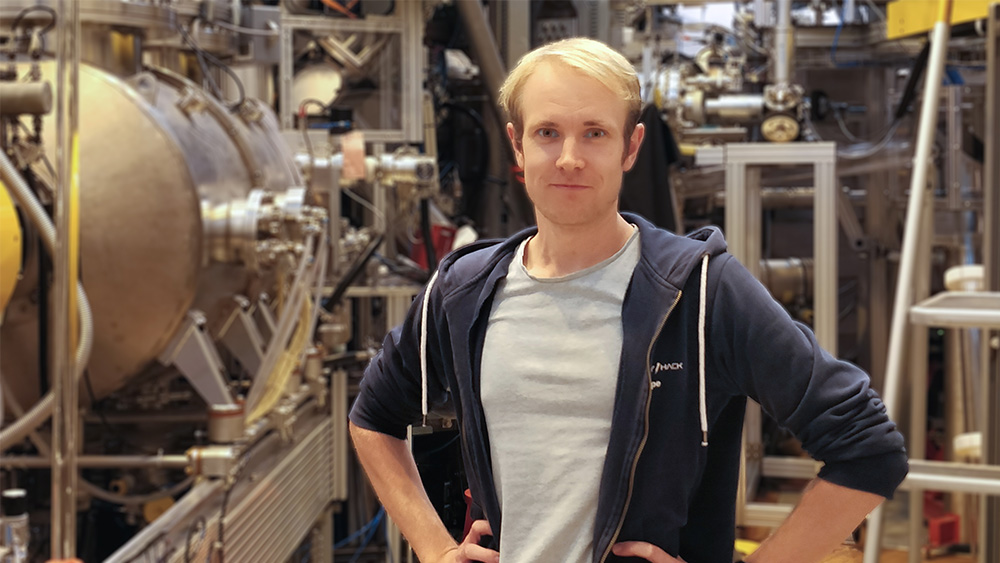The dream: an economically sustainable fusion reactor

Fusion is the sustainable energy source of the future. However, there are still complex obstacles to this technology that can damage reactors. Researcher Mathias Hoppe is developing advanced computational methods to study how to prevent runaway electrons.
One of the biggest challenges for future fusion reactors is to deal with the enormous energy released during a sudden shutdown, called a 'disruption'. This phenomenon can cause extensive damage to the reactor walls. In addition to heat being rapidly conducted to the wall and causing melt damage, some of the energy is converted into electrons that are accelerated to near the speed of light, called 'runaway electrons'. These electrons can cause significant damage to the reactor.
"My research is about identifying and evaluating different methods to prevent runaway electrons from occurring or to mitigate their damage if they do occur. This is where the theory development and modelling we do here at KTH comes in and makes a difference. We develop models that can be tested and confirmed in today's fusion reactors so that we can then use them to make predictions about tomorrow's machines. Specifically, we use a combination of models from electromagnetism, statistical physics and fluid mechanics to describe how the extremely hot plasma confined in a fusion reactor behaves," says Hoppe.
Developing the computational techniques
As a PhD student at Chalmers, Hoppe developed the DREAM simulation code. After his PhD, he spent some time as a postdoc in Switzerland to simulate experiments and determine whether DREAM can reproduce results from today's fusion experiments. Since 2023, the work has continued at KTH, together with students, to simulate both current and future fusion experiments.
"DREAM has become one of the leading codes for simulating disruptions and runaway electrons. Besides being used extensively at KTH and Chalmers, DREAM is used at almost all major fusion laboratories in Europe and at several labs in the US and China. As the lead developer of the code, I am directly involved in many of the projects and try to help other researchers run DREAM and interpret the physics that takes place in fusion reactors during a disruption," says Hoppe.
Future visions for fusion research
The problem of runaway electrons in fusion reactors is complex and far from solved. Hoppe aims to work with the research team to develop more computationally efficient models of disruptions and runaway electrons to evaluate more possible methods to minimise the damage. Access to such models could save time and money for future reactor experiments and help make fusion an economically viable and attractive energy source.
Text: Charlotta Alnersson
